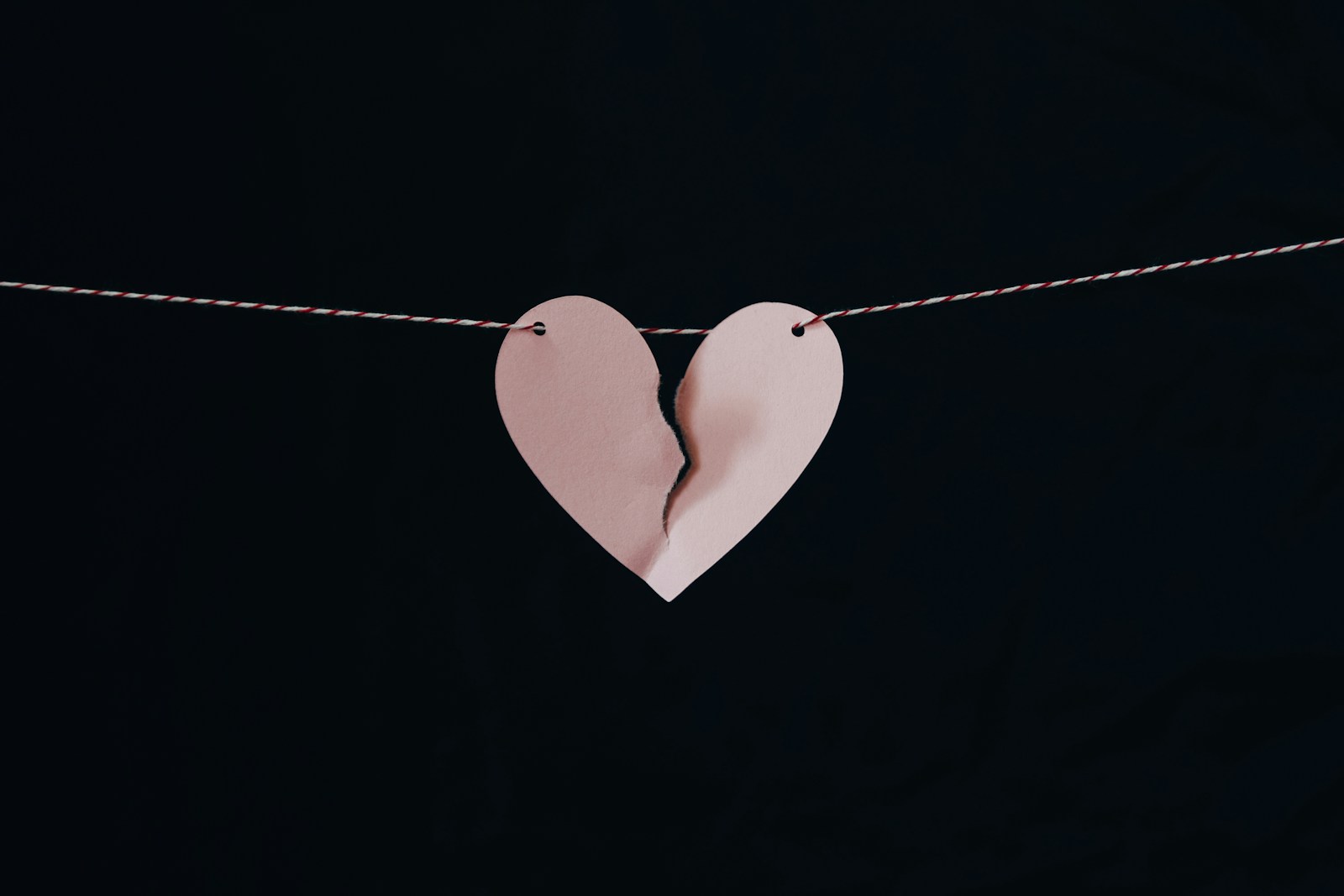Repeatedly returning to a relationship that brings more pain than joy is an experience so many people know all too well. Even when friends, family, or even your own instincts tell you to move on, the emotional pull can feel impossible to resist. This cycle, often described as the “heartbreak loop,” is more than just a bad habit—it’s a consequence of complex psychological patterns that blend attachment, hope, and human vulnerability.
Understanding the Heartbreak Loop
The heartbreak loop is a recurring cycle in which individuals leave an unhealthy or unfulfilling relationship, only to return to the same partner. This cycle can involve repeated breakups and reconciliations, often accompanied by emotional distress, confusion, and a sense of powerlessness.
Breaking out of this pattern might feel daunting, yet understanding its roots is the first step toward freedom and genuine healing. Let’s examine why we become trapped by the heartbreak loop and what you can do to break free.
Why Do People Keep Going Back?
There are several reasons people re-enter relationships that consistently hurt them. These reasons can be psychological, emotional, and even biological. Here are some of the most common explanations:
- Attachment Styles: How we connect to others stems from our early relationships with caregivers. Those with anxious or avoidant attachment styles often struggle with letting go of intense romantic connections, even if those relationships cause distress.
- The Hope for Change: After every argument, breakup, or disappointment, hope can sneak in—hope they might change, hope things could be “like they used to be,” hope that love is enough. This can distort judgment and make returning seem logical.
- Addiction to the Emotional Rollercoaster: Intense relationships can trigger the brain’s reward system. Reuniting brings a rush of dopamine, creating a cycle that mimics substance addiction.
- Fear of Loneliness: Even an imperfect connection may seem better than being alone, especially for those who equate partnership with self-worth or security.
- Low Self-Esteem: If you believe you don’t deserve better, or that you’re unlikely to find someone else, you’re more likely to tolerate mistreatment and cycle back into the same unhealthy dynamic.
- Comfort in the Familiar: Human beings are drawn to patterns they know, even problematic ones. Familiarity feels safe, even when it isn’t healthy.
The Cycle Illustrated: How It Typically Unfolds
Most heartbreak loops follow a predictable pattern. While everyone’s situation is unique, here’s a common cycle:
- Breakup: The relationship ends, often after a fight or culmination of hurtful behavior.
- Pain and Withdrawal: Both partners feel distress. There may be a period of no contact—intense feelings of grief, regret, and loneliness emerge.
- Reconnection and Reconciliation: One or both partners reach out, share apologies, or reminisce about happy memories. This stage is filled with hope and relief.
- Honeymoon Phase: Things feel better than ever—for a while. Both partners might promise things will be different.
- Return to Old Patterns: The issues that caused the breakup resurface. The relationship slips back into an unhealthy dynamic.
- Repeat: The cycle restarts, sometimes with growing intensity and pain with each repetition.
Breaking this loop is possible—with awareness, support, and strategic steps toward healing.
The Psychology Behind Heartbreak Loops
Understanding the inner workings of the heartbreak loop requires delving into the psychology of attachment, memory, and emotional regulation. Here are some concepts that play a role:
Attachment Theory
Attachment theory proposes that the bonds we form in childhood inform how we connect in adulthood. People with anxious attachment often prioritize relationships above their own well-being, fearing abandonment so intensely that they endure unhealthy situations.
The Power of Nostalgia
The mind is selective in memory. After a breakup, it’s common to idealize good times and downplay negative moments. This “rosy retrospection” makes returning to a partner feel safe—even when reality tells another story.
The Brain's Reward System
Love, especially in tumultuous relationships, releases molecules like dopamine and oxytocin, which can create a high when reunited (and withdrawal symptoms when separated). This biochemical reinforcement strengthens the urge to return.
Fear and Uncertainty
The unfamiliar is daunting. Endings force us to confront questions of identity, purpose, and worth. The discomfort of this uncertainty draws us back to what we know, even if it doesn’t serve us.
How to Break Free from the Heartbreak Loop
Escaping the heartbreak loop requires courage, self-compassion, and concrete actions. Start by acknowledging your pain is real, but that your future can look different. Here are some essential steps to take:
1. Cultivate Self-Awareness
Ask yourself tough questions. What keeps drawing you back? Is it loneliness, fear, self-doubt, or guilt? Journaling, talking with a trusted friend, or working with a therapist can help clarify your triggers and motivations.
2. Reframe Your Narrative
Instead of focusing on what you’re losing, concentrate on what you stand to gain—peace, self-respect, growth, and the possibility of healthier relationships. Remind yourself: ending a painful cycle is an act of courage, not failure.
3. Cut Off Contact (at Least Temporarily)
No-contact can be difficult but is essential for breaking emotional dependence. This gives your mind and heart space to heal, process, and gain perspective.
4. Build a Support System
You don’t have to do this alone. Lean on friends, family, or join support groups where you can share your experiences and learn from others who’ve been in similar situations.
5. Prioritize Self-Care and Routine
Invest in activities that promote well-being: exercise, healthy eating, hobbies, mindfulness, or even picking up new skills. Busy hands and a nurtured body can anchor you when emotions feel overwhelming.
6. Address Underlying Issues
If low self-esteem or unresolved trauma fuels your relationship patterns, consider working with a mental health professional. Therapy can help rewrite limiting beliefs and develop healthy boundaries.
7. Set Clear Boundaries
Learn to say no—to your ex and to yourself when tempted to reach out. Physical and emotional boundaries are vital for long-term healing. Make a list of what behaviors you will and will not accept in future relationships.
8. Remind Yourself of the Reasons to Leave
As time passes, it’s easy to forget why things didn’t work. Keep a list—written or mental—of hurtful incidents, unmet needs, or ways you compromised your happiness. Revisit this if you consider going back.
Healing After the Loop: Rediscovering Yourself
Freedom from the heartbreak loop isn’t just about ending a relationship—it’s about rebuilding your life and reclaiming your peace. Here’s how:
Reconnect with Your Values
Ask yourself: What do I want from future relationships? What values do I want to embody—kindness, integrity, self-respect? Use these as a compass as you move forward.
Process and Forgive
Allow yourself to grieve: lost hopes, wasted time, or broken dreams. Be gentle with yourself and, in time, extend forgiveness—to your ex, to the situation, and most importantly, to yourself.
Celebrate Your Progress
Every day you choose not to go back, you reclaim more of your life. Acknowledge small wins, such as resisting the urge to contact your ex or prioritizing your needs. Healing isn’t linear, but every step matters.
When to Seek Professional Help
If your heartbreak loop involves emotional or physical abuse, or if the pain becomes unbearable, seek help immediately. Support hotlines and licensed therapists provide resources and guidance for safe escape and recovery.
Even outside of crisis, professional support can help unravel the deeper threads keeping you tethered to unhealthy cycles. Therapy interventions such as Cognitive Behavioral Therapy (CBT) or Attachment-Focused Therapy have proven effective in building healthier relationship patterns.
Frequently Asked Questions
- Is it ever okay to go back? Sometimes, relationships can improve if both partners are committed to growth and seek counseling. However, serial heartbreak, abuse, or a pattern of broken promises are signs it’s healthier to move on.
- How long does it take to break the loop? There’s no universal timeline; it depends on your history and circumstances. Patience and persistence are key.
- What if my ex keeps reaching out? Communicate your boundaries clearly and use tools such as blocking their contact if necessary. Prioritize your mental and emotional health.
Moving Forward: Creating New Patterns
The cycle of heartbreak may have shaped your narrative, but it does not define your future. Every step you take towards understanding yourself, nurturing your needs, and trusting your capacity to love again builds a foundation for healthier, more fulfilling connections ahead.
Breaking free from the heartbreak loop isn’t an overnight journey. But with self-awareness, support, and the willingness to value yourself, you can write a new story—one where you choose healing, growth, and authentic happiness.





